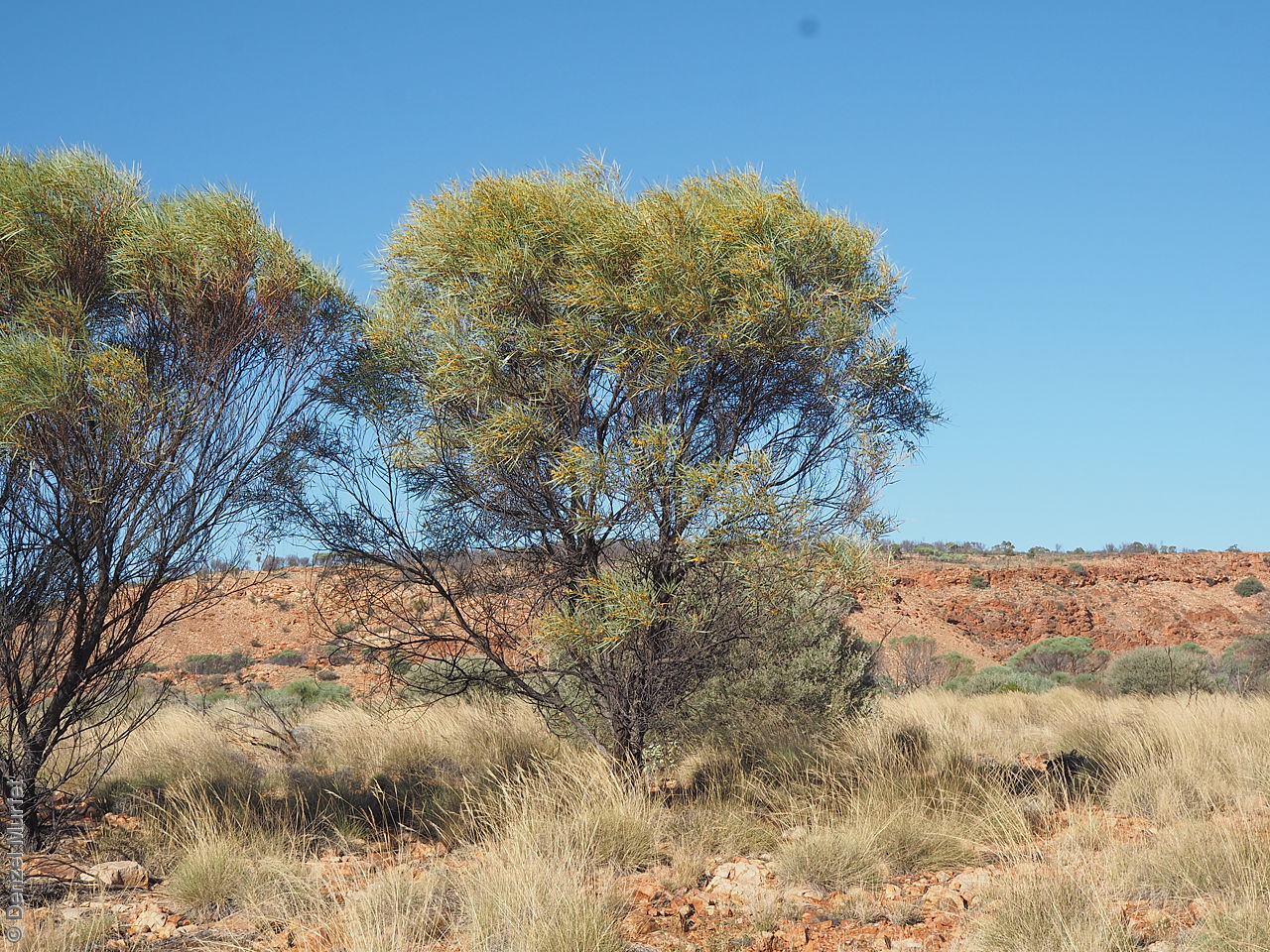
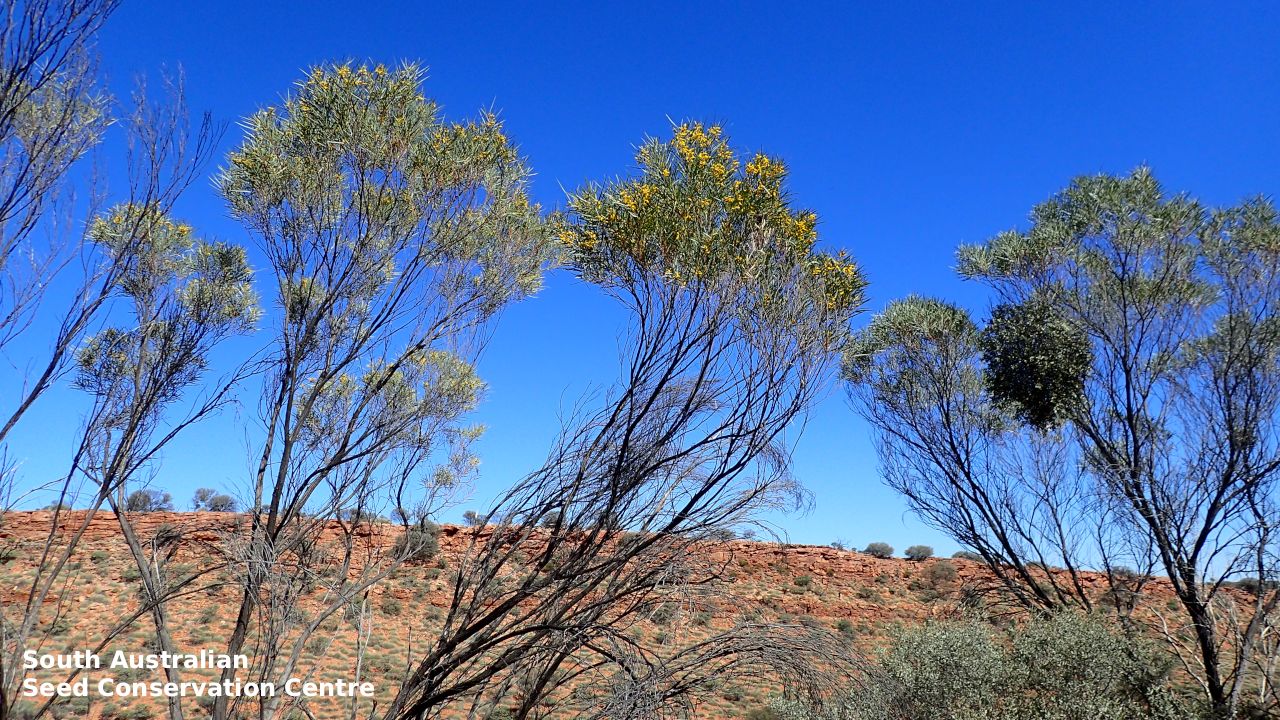
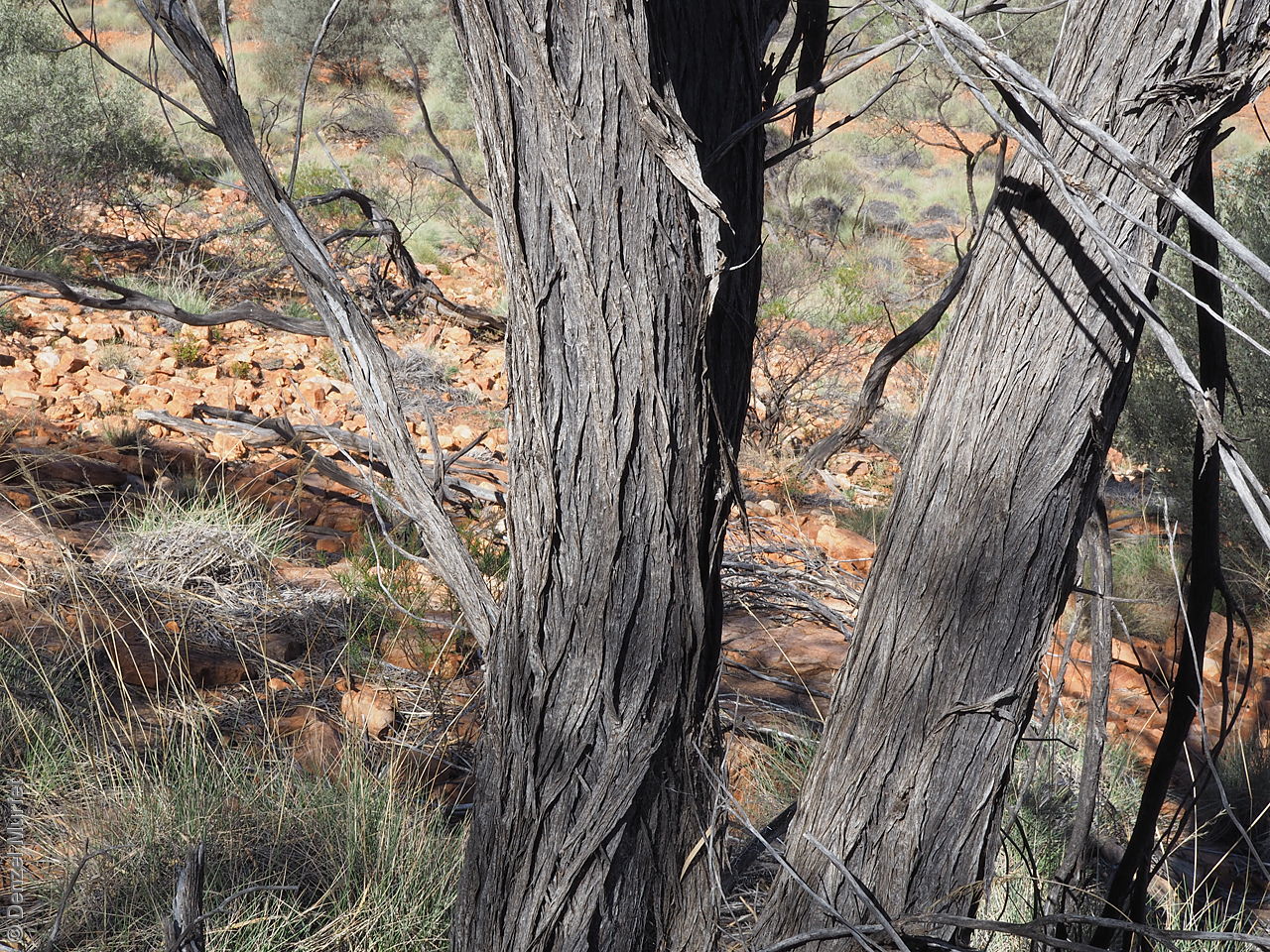
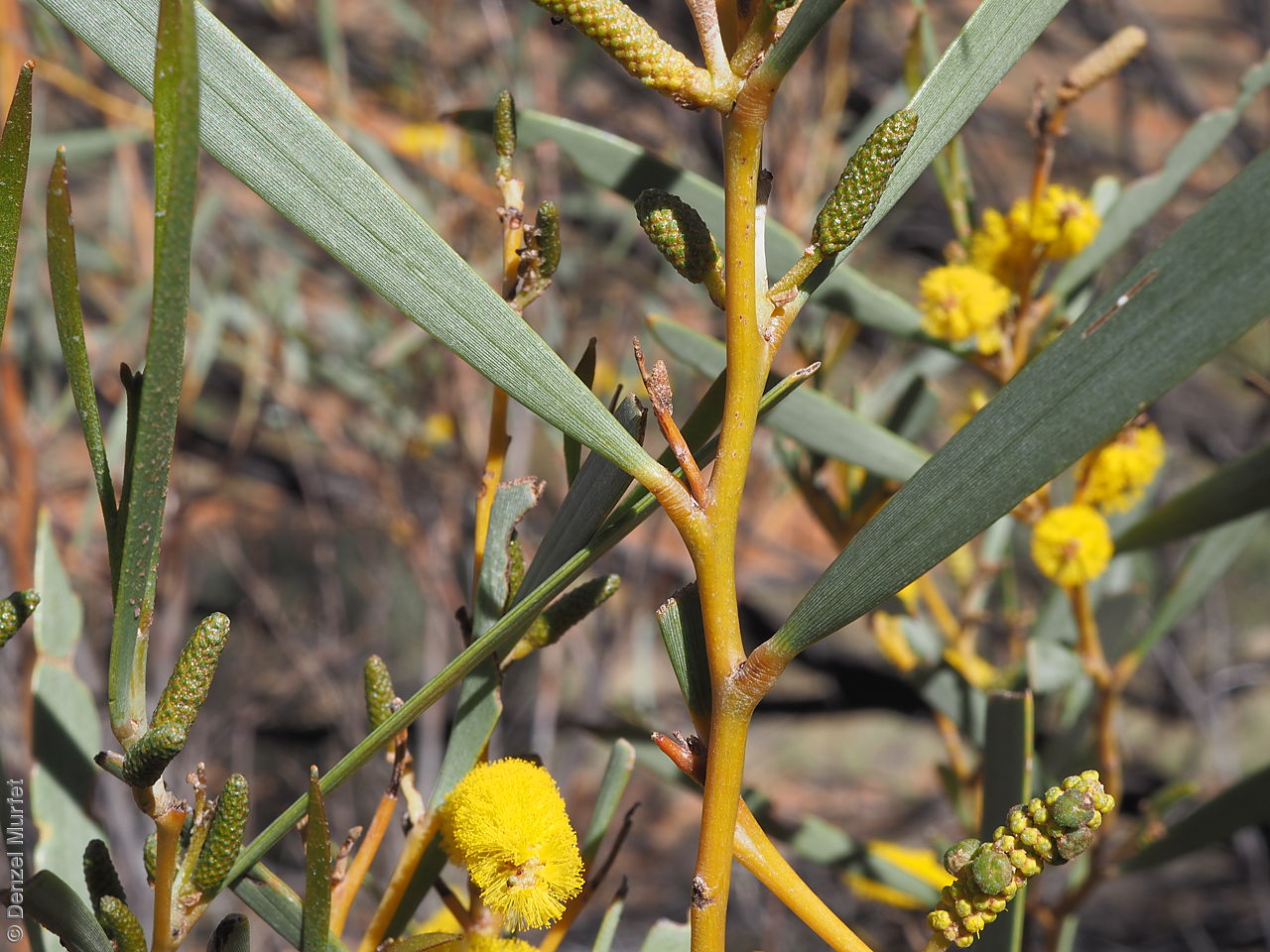
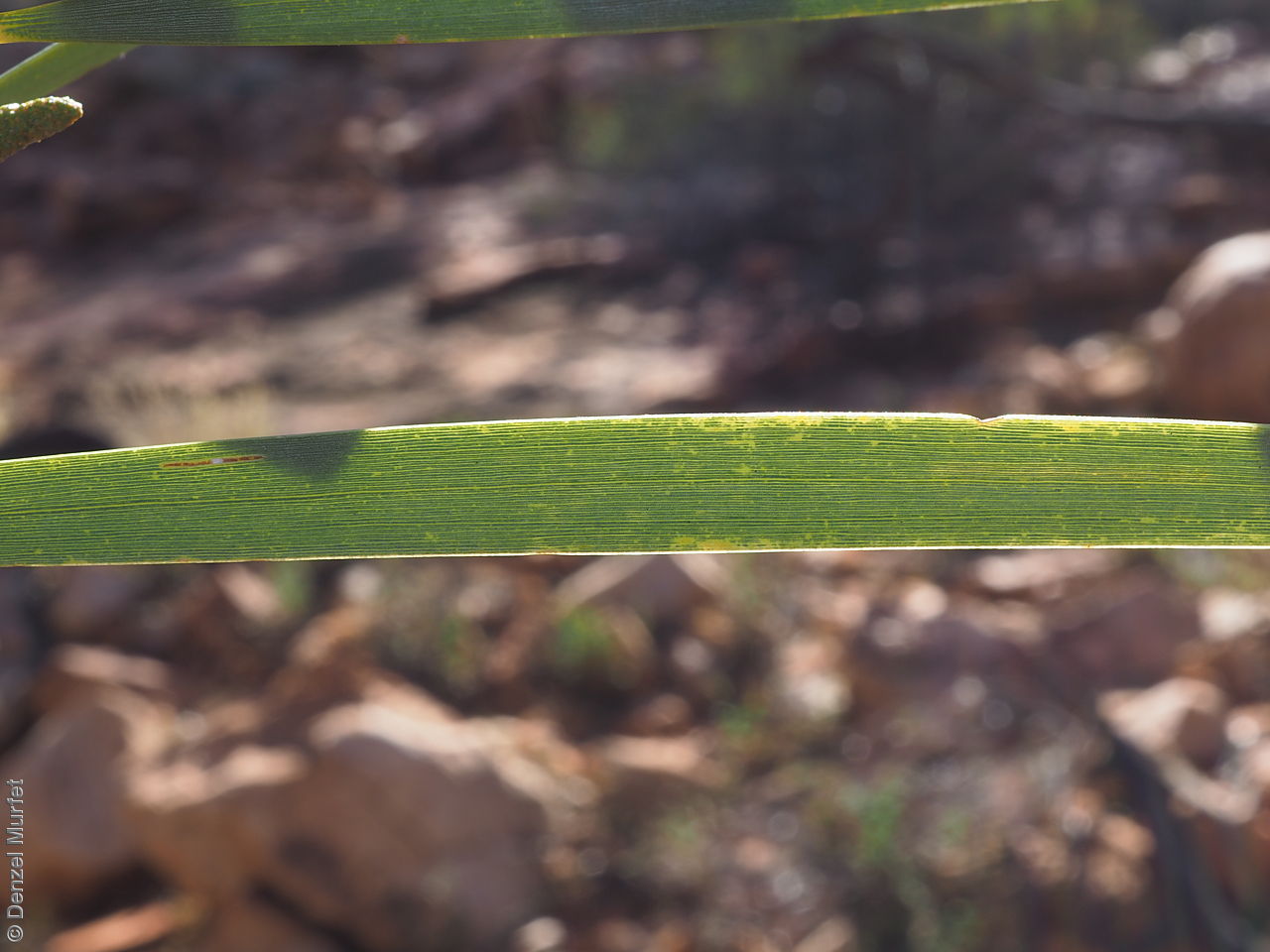
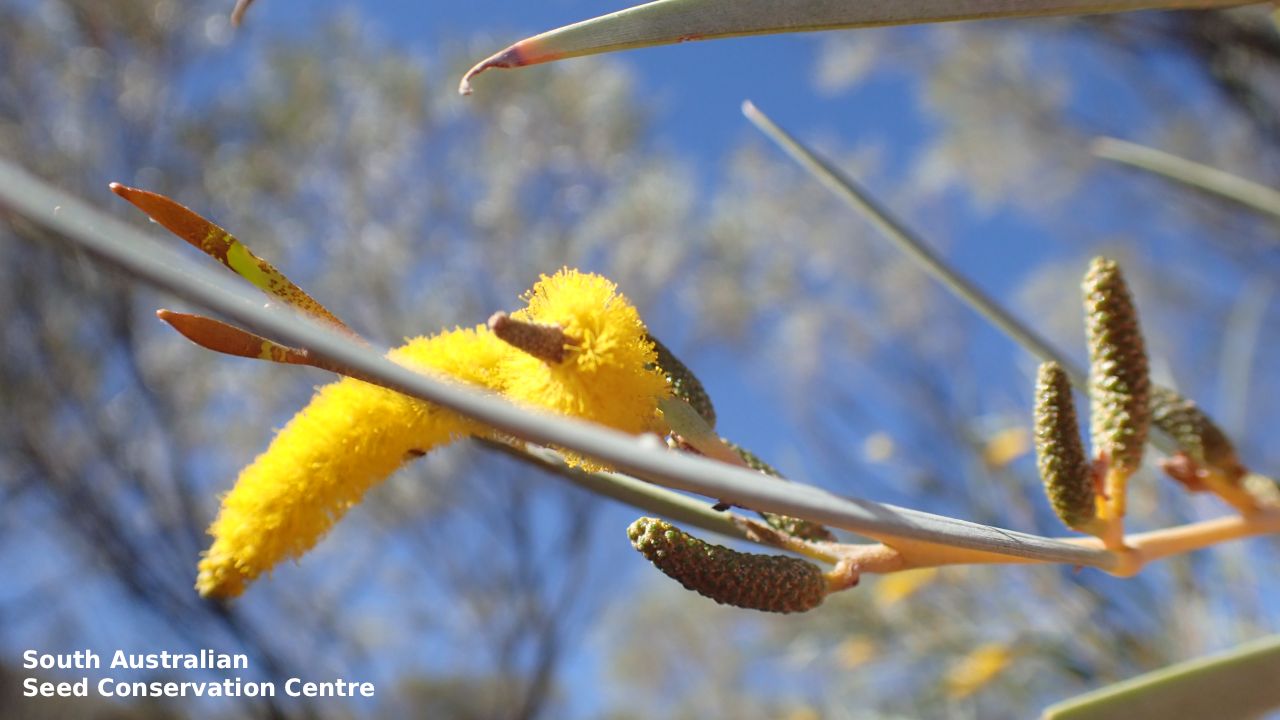
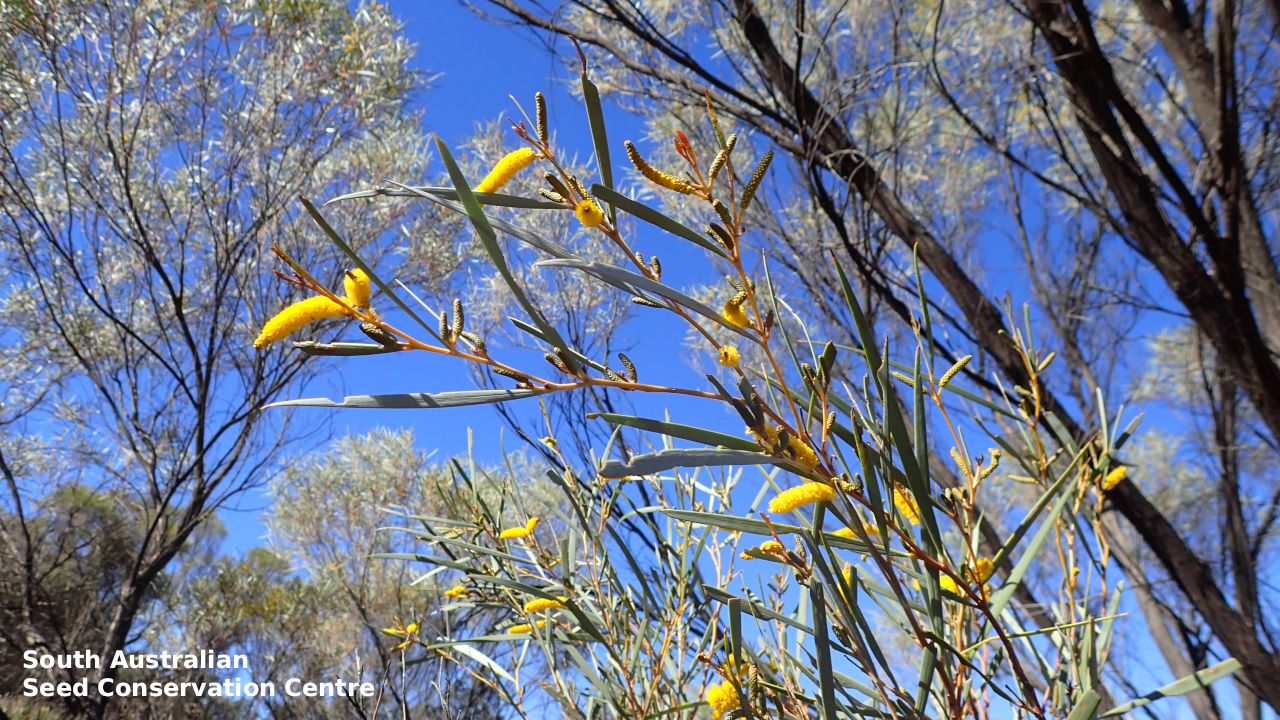
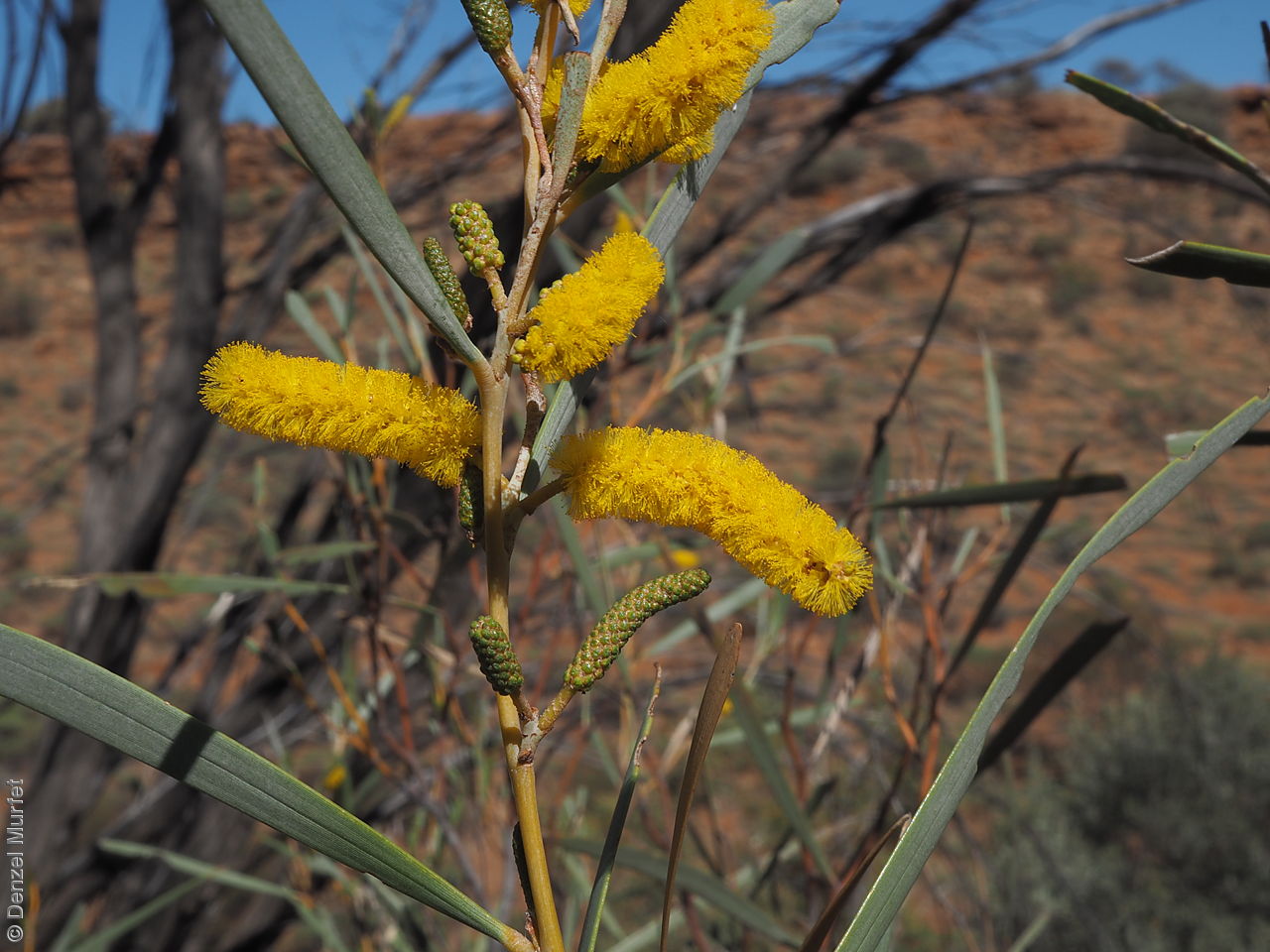

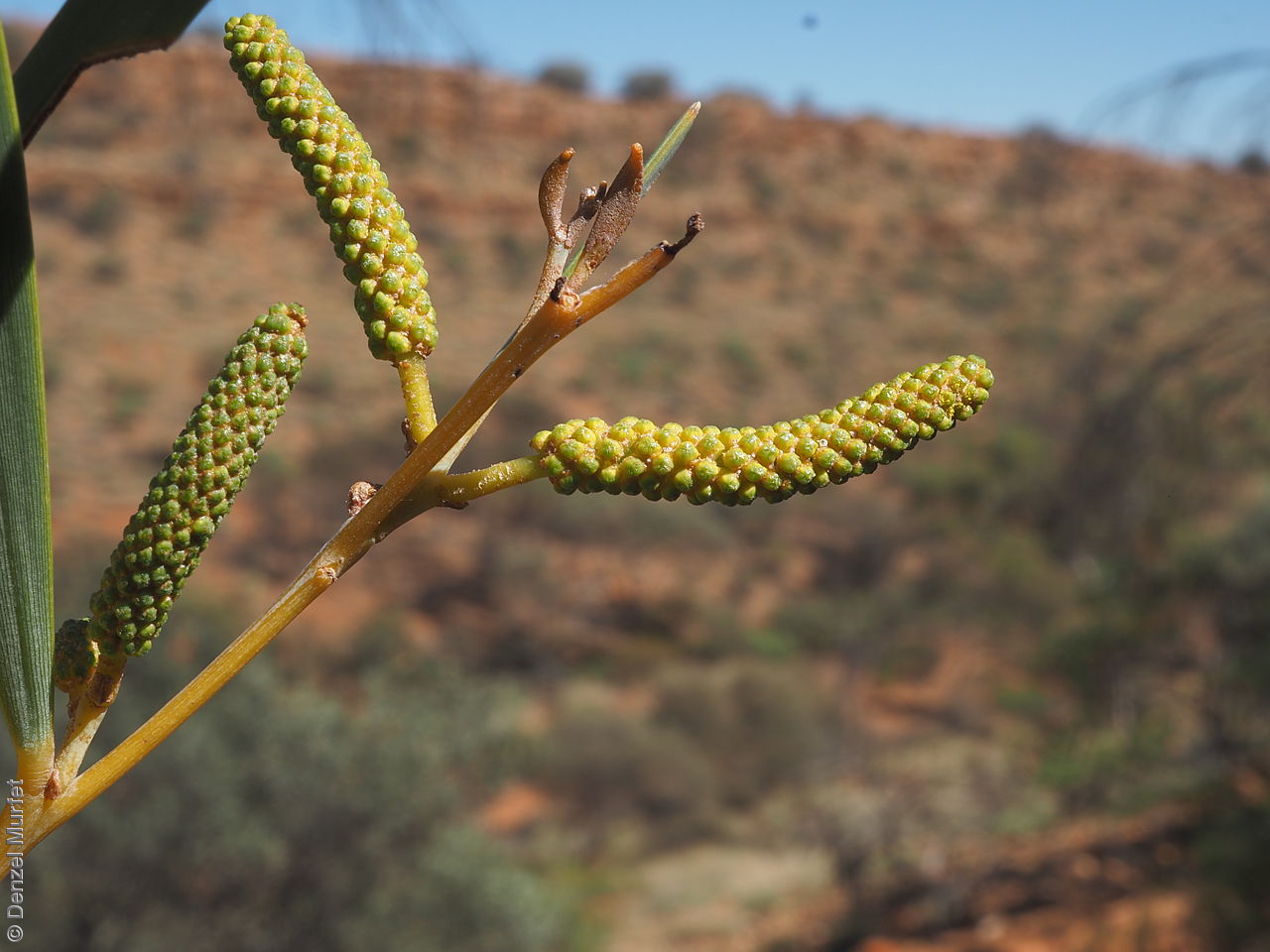
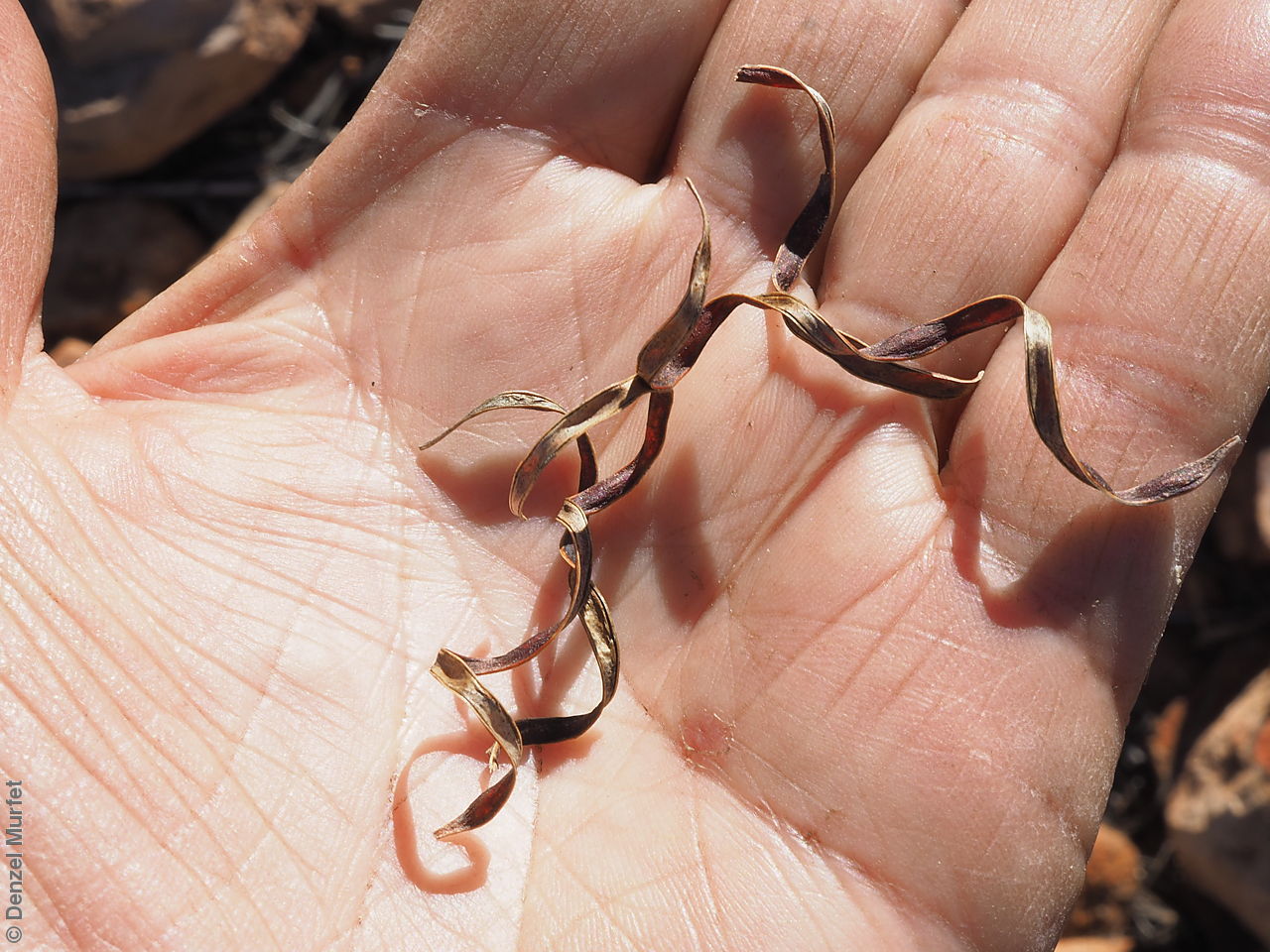


Prior names
Racosperma ammobium
Etymology
Acacia from the Greek 'akakia' and derived from 'ake' or 'akis' meaning a sharp point or thorn and 'akazo' meaning to sharpen. Dioscorides, the Greek physician and botanist used the word in the 1st century AD for the Egyptian thorn tree, Acacia arabica. Ammobia from Latin meaning sand dweller, alluding to its habitat.
Distribution and status
Found in the far north-western part of South Australia, growing on sandy or gravelly soils on upper slopes of ranges. Also found in the Northern Territory. Native. Rare in South Australia. Rare in the Northern Territory.
Herbarium region: North Western
NRM region: Alinytjara Wilurara
AVH map: SA distribution map (external link)
Plant description
Multi-stemmed shrub or small tree to 7 m with longitudinally fissured grey to black bark and angular or flattened stems, becoming terete, pale yellow or light brown. Phyllodes linear, flat, to 27 cm long and 9 mm wide, tapered toward apex and base. Inflorescence singl eor paired cylindrical spikes on axillary shoots to 5 cm long with dense yellow flowers. Flowering between August and October. Fruits are dark brown linear pod to 11 cm long and 3 mm wide, slightly constricted between and strongly raised over seeds. Seed embryo type is investing.
Seed collection and propagation
Collect seeds between October and December. Collect mature pods that are turning brown with hard, dark seeds inside. Place the pods in a tray and leave to dry for 1-2 weeks or until the pods begin to split. Then rub the dried pods to dislodge the seeds. Use a sieve to separate any unwanted material. Store the seeds with a desiccant such as dried silica beads or dry rice, in an air tight container in a cool and dry place. This species has physical dormancy that needs to be overcome for the seed to germinate (e.g. nicking or softening the seed coat).